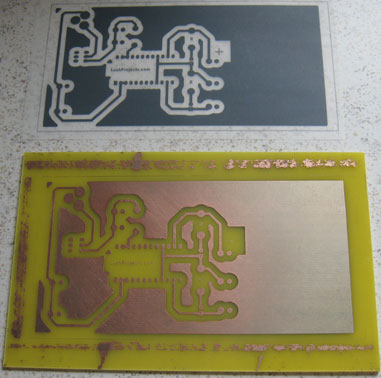-
PCB Layout Tools – I am a KiCAD fan
Posted on September 24th, 2013 No commentsFrom the postbag:
Was thinking about a project building front panels for various DIY synth projects out of PCB material and mounting all the control components (pots, switches) on the PCB itself like on the Lush (eliminating most of the point to point wiring). What PCB design package do you use and how difficult was it to learn?
Tom
Dear Tom,
As I’ve said elsewhere I hate point-to-point wiring so I made it a feature of LushOne to have all the components mounted on the board. I had previously used Eagle but the LushOne the board was too big for the low-cost edition. In any case, I like to use open source software when I can even though a lot of it is not that user-friendly. The LushOne was the 1st project I laid out in KiCAD and I’ve actually found it a really effective design tool.
Like all CAD systems it has a bit of a learning curve, but generally I’ve found it easier to use than Eagle. It’s not as powerful as Eagle and lacks the scripting capabilities but it is perfectly adequate for my projects.
The worst part of KiCAD is the Gerber viewer. I tend to use the online Gerber viewers like the one at OSHPark.
-
Building a LushOne system
Posted on September 17th, 2013 No commentsIt has always been my intention that it should be possible to use the LushOne to build big systems. Now we’ve got three modules designed we’ve got the basics of a capable modular synthesizer. The building blocks available in the three modules are functionally very similar to those found in classic systems like the mini Moog and MS20. Still, it’s natural to want more of everything and it is particularly helpful to have more oscillators and more mixers in any synthesizer. Over the last few months I’ve been working on my own LushOne system.
The physical design is very simple. It’s just a piece of plywood with holes on a grid to mount LushOne boards on spacers. The layout is set up for a 3 x 3 grid of boards. I’ve designed a special board to hold the RECOM DC to DC converter. Power is distributed by “chocolate block” terminal strips under the LushOne circuit boards. Currently there are two LushOne base modules, one LushOne Contour and two LushOne Inca modules.
The boards have been somewhat modified for my own requirements. The same MIDI input controls both LushOne Base modules. This allows four oscillators to be controlled from the keyboard. The LushOne Base modules are running the prototype version 2 software which provides additional wave shapes as well as the ability to run the OSC2 to an octave higher or lower than the main oscillator. One of the LushOne base modules has been modified so that the OSC2 output is at a signal level rather than at a control voltage level. This makes is really easy to have textured base notes with several harmonics.
The LushOne Contour module is standard. But, one of the LushOne Inca modules has a potentiometer and photo cell fitted instead of the joystick as an alternative way to provide input.
The additional flexibility of the system with so many oscillators and signal processors is great. When I get time I’ll write up in detail some of the modifications. At the moment I am playing with digital delays using the PT2399 chip and I really must build a second LushOne Contour to get a second ADSR.
It may not be the prettiest synth in the world, but I think it looks cool and the bang-for-the-buck is hard to beat.



